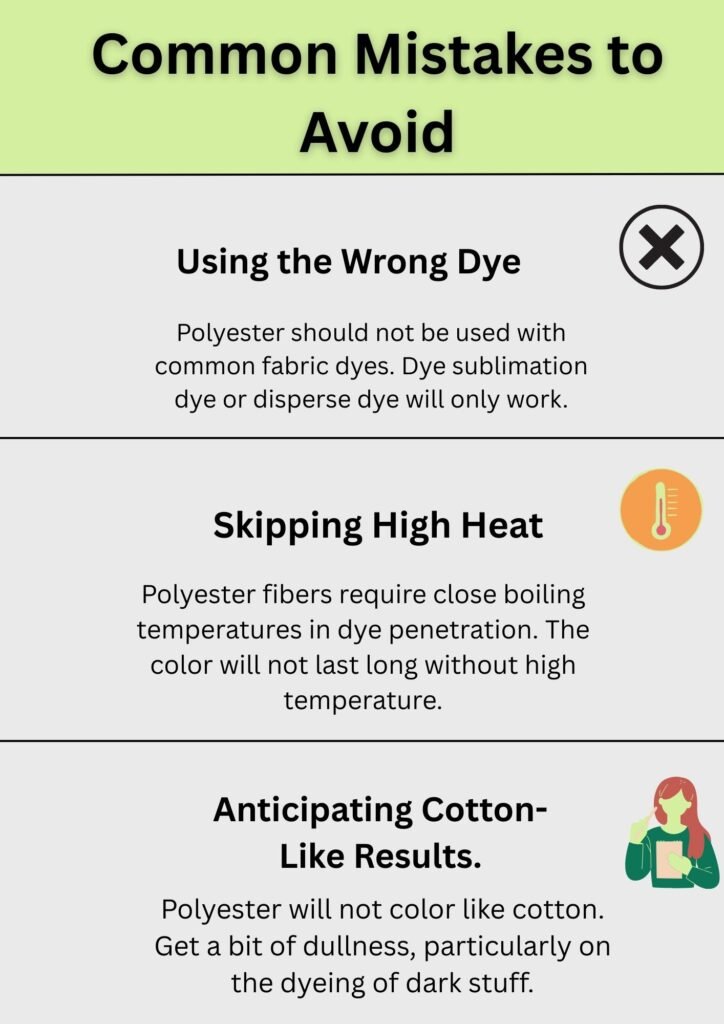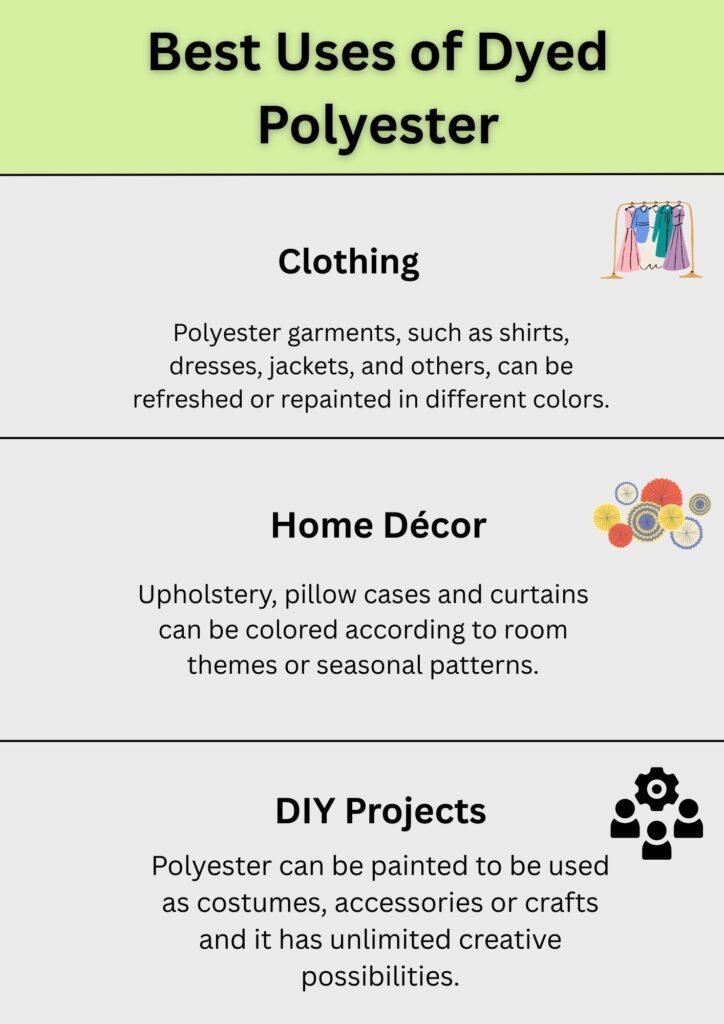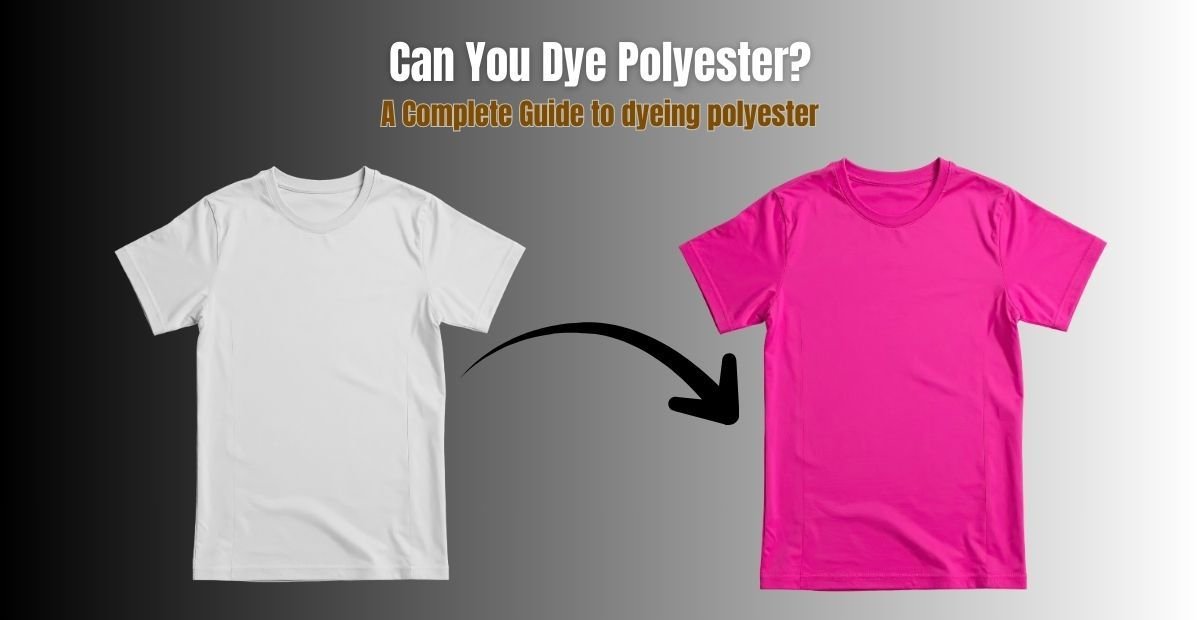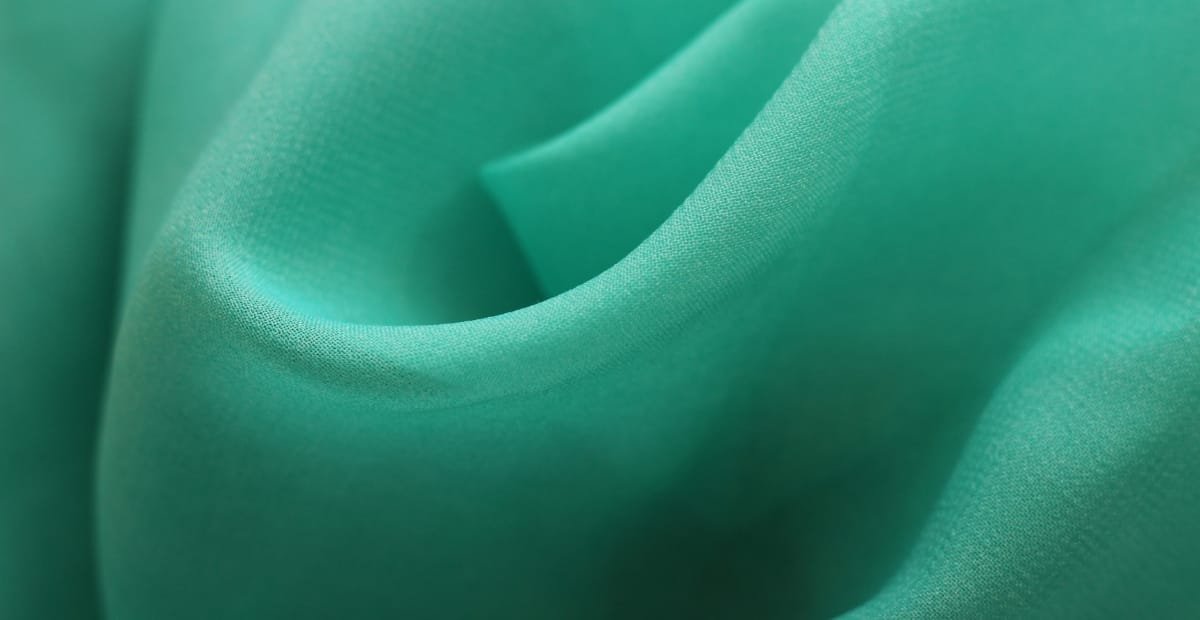Introduction
Polyester is among the well-known fabrics in the world, which is used in clothing, upholsteries, and even accessories. It is appreciated by its resistance to wrinkles, durability, and affordability. But most individuals have a question, can you dye polyester when they need to revamp old clothing or tailor fabric to use on a project. Polyester can be dyed although it uses a special process unlike natural fabrics such as cotton or wool.can you dye polyester
Natural fibers readily take dye and are porous in nature; polyester is synthetic fiber produced by use of polymers which are of petroleum origin. It has a plastic-like surface and cannot absorb dyes that are made in water, so it is difficult to color. That is why a lot of beginners are not able to change the color of the polyester on their own.
This article will tell you all the things you have to know about polyester dyeing such as how it is difficult, which dyes to use and how you can successfully dye polyester cloth using methods that will not make you feel like a novice.
Can You Dye Polyester?
It is possible, but only under the condition of using the proper dyes and procedures to dye polyester. Polyester is also very difficult to dye compared to natural fibers since it is a synthetic fiber and it lacks the ability to take in dye. Conventional dyes of fabric such as cotton or wool do not take polyester.
In order to successfully dye polyester, you will require to apply disperse dyes or sublimation printing methods, which is a technique to apply heat on to the fabric to transfer the color. When properly applied, the color is attached to the fibers and has a long life.To dye polyester successfully, you need to use disperse dyes or sublimation printing techniques, which apply color with heat. When done correctly, the color bonds with the fibers and lasts for a long time.
Why Is Polyester Hard to Dye?
Polyester is hard to color due to the chemical composition. Polyester fibers are waterproof and non-porous unlike cotton or wool. They are in fact plastics produced out of polyethylene terephthalate (PET) having very low absorbency.
Natural fabrics can readily absorb water and contain dye molecules within the weight. Polyester on the contrary requires a lot of heat to open its fibers to allow it to take color. The dye molecules do not dissolve or concentrate on the surface in the absence of heat and are washed away.can you dye polyester
This is a scientific distinction to why most of the common dyes do not react on polyester. Rather, you require dyes that have a unique property of binding to synthetic fibers at high temperatures.
Natural fabrics like cotton have an open, porous structure that absorbs water and dye molecules easily. Wool and silk contain proteins that bond with natural and synthetic dyes without much effort. Polyester, on the other hand, behaves differently. Its fibers are hydrophobic, meaning they repel water. Because most traditional dyes are water-based, they cannot penetrate the fibers of polyester.can you dye polyester As a result, the color either fails to stick or washes out quickly.
Another reason polyester is difficult to dye is its smooth, plastic-like surface. Unlike natural fibers, which have rough textures that help capture and hold dye molecules, polyester fibers are slick. This smoothness means there is very little surface area for the dye to grip onto. Without special methods, the dye remains on the surface and does not bond deeply.
Heat plays a critical role when dyeing polyester. Polyester fibers need to be heated to very high temperatures—close to boiling—so that the molecules open up slightly. Only then can disperse dye particles penetrate the fiber structure.can you dye polyester If the water is not hot enough, the dye will not enter the fabric properly, and the results will be patchy or faded. This makes polyester much less beginner-friendly compared to cotton, which dyes well in warm or even cold water.
Best Dyes for Polyester
All dyes do not work with polyester. The first step towards success is to choose the right type.
Disperse Dyes -The Only Dependable Solution.
When to dye polyester, the best kind of dye is dispense dyes. They operate by placing small particles of dye in hot water which get absorbed by polyester fibers under heating to boiling point. Disperse dyes are produced specifically on synthetic fabrics unlike cotton fabric dyes.
Sublimation Dyes / Heat Transfer.
Sublimation printing involves the application of heat and pressure to transfer the dye on a polyester fabric.can you dye polyester, This type is a great way of detailed designs, patterns or logos. It is carried out by printing dye on special paper and heat-pressing it on the polyester surface.can you dye polyester
Why Regular Dyes Don’t Work
Ordinary dyes used on fabric, such as most of the well-known household dyes, are intended to be used on natural fiber.can you dye polyester They are unable to connect to polyester fibers due to the fact that the structure of the fabric is not easily absorbent.can you dye polyester. Polyester would tend to show streaky, faded, or washed-out effects when they are used.
How to Dye Polyester at Home (Step-by-Step Guide)
However, it can be home dyed with patience and with the right equipment. The following is an easy to follow tutorial.
Materials Needed
- Polyester fabric or garment
- Polyester dye (dispersible type)
- Large stainless steel pot
- Stove or heat source
- Protective gloves
- Stirring spoon (non-food use)
- Detergent for pre-washing
Step-by-Step Process
- Pre-Wash the Fabric: Wash your polyester to get rid of dirt or oils or finishes that prevent the uptake of dyes.can you dye polyester
- Get the Dye Bath Ready: Add a lot of water to a pot that is big enough to immerse the fabric. Heat until near boiling.
- Add Dye: Add disperse dye in the hot water and stir to dissolve.
- Submerge fabric: Add the polyester to the dye bath and stir continuously until the dye gets evenly distributed.
- Heat: Have the water in a near-boiling position of 30 to 45 minutes. can you dye polyesterDye penetration requires heat.
- Rinse and Wash: Take the cloth, run under the warm water and wash with a mild detergent.
- Hang or Air-Dry: dry the fabric, by hanging or leaving it to dry.
Safety Precautions
Wear gloves always to cover your skin with dye.can you dye polyester. One should work in a well-ventilated place since fumes may be given out by high heat and the dye particles. Boiling water must be handled with care so that it does not burn.
Alternative Dyeing Methods for Polyester
You can try some other options, in case you do not want to boil polyester in disperse dye.
Sublimation Printing
The technique is superb in incorporating designs and graphics.can you dye polyester. Sublimation with a heat press enables bright and long-lasting patterns to be transferred to polyester.
Fabric Spray Paints
Polyester can be sprayed with spray paints that are created to be used on fabrics, without immersion dyeing. They are simple to use and do not wear out as long as disperse dyes.
Fabric Markers
In small scale projects, polyester can be used with fabric markers. They can be fitted with details, names or unique artwork.
Can You Dye 100 Percent Polyester or Blends?
In posing the question can you dye polyester, one must be aware that one is dealing with pure polyester or a mixture.
100% Polyester
Disperse dyes and heat are needed to dye 100 percent polyester. This might be difficult to new players as the polyester resists do not take up color.
Polyester Blends
Blends, like polyester-cotton are simpler to dye. Natural dyes of fabrics absorb the cotton material giving more colorful outputs. But colors can appear uneven when often the polyester does not absorb as well as the cotton does.can you dye polyester
Why Blends Are Better for Beginners
Blends are more forgiving in case you are new. They take up dye with less difficulty and no special dyeing processes or excess heat are necessary.
Common Mistakes to Avoid
Polyester dyeing must be made accurate. The prevention of typical pitfalls will save time and disappointments.

Using the Wrong Dye
Polyester should not be used with common fabric dyes. Dye sublimation dye or disperse dye will only work.
Skipping High Heat
Polyester fibers require close boiling temperatures in dye penetration. The color will not last long without high temperature.
Anticipating Cotton-Like Results.
Polyester will not color like cotton. Get a bit of dullness, particularly on the dyeing of dark stuff.
Best Uses of Dyed Polyester
Polyester fabric is available in various creative forms and usage.

Clothing
Polyester garments, such as shirts, dresses, jackets, and others, can be refreshed or repainted in different colors.
Home Décor
Upholstery, pillow cases and curtains can be colored according to room themes or seasonal patterns.
DIY Projects
Polyester can be painted to be used as costumes, accessories or crafts and it has unlimited creative possibilities.
Conclusion
So, can you dye polyester? Yes, however, it is necessary to approach it in a right way. Polyester is an artificial fiber that is not a natural fiber able to take dye.can you dye polyester. Disperse dyes or sublimation printing, coupled with high heat, is required to be used to succeed.
Novices can use blends at first so that the results are easier and the advanced DIYers can use a 100% polyester project. With proper procedure, use of proper dyes and methods of dyeing, one can obtain colorful and durable effects on polyester fabric.Dyeing polyester is not as simple as cotton, but with patience and the right tools, it becomes a rewarding process.
So, the next time you wonder can you dye polyester, the answer is a confident yes—just make sure you use the correct techniques for the best results.
FAQs
Is it possible to dye in Polyester using Rit Dye?
Polyester is insensitive to Standard Rit dye. Rit DyeMore is however designed to be used with synthetics alone and it is also capable of being used in high heat.
Can You Tie-Dye Polyester?
Polyester is insensitive to traditional tie-dye kits. Tie-dye would be challenging because you would require the dispersion of dyes and boiling techniques.
Washing Polyester: Can You Dye it in the Washing Machine?
No, polyester will not be able to be washed in the washing machine due to the inability of the water to become hot enough.
Polyester Dye Lasting Period.
Polyester color is also durable and cannot be washed out when it is stained with disperse dyes.
Fades easily Polyester Dye?
Polyester dye is long lasting unless it is subjected to sun or severe detergents, which in turn can weaken the dye and make it fade away.
How do you remove dye from polyester if the result goes wrong?
Removing dye from polyester is extremely difficult because disperse dyes bond deeply. Commercial color removers may lighten the color but won’t always return the fabric to its original shade.
How long should polyester stay in the dye bath?
Polyester usually needs 30–45 minutes in near-boiling dye baths for the color to set properly. Stirring regularly helps ensure even coverage.
Is it cheaper to dye polyester or buy new fabric?
For small projects, dyeing can be affordable. However, if you need large amounts of polyester in a new color, buying pre-dyed fabric may be more cost-effective.



